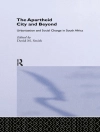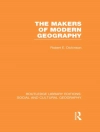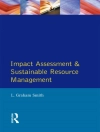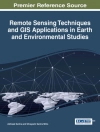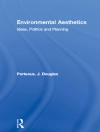In the recent years, space-based observation methods have led to a subst- tially improved understanding of Earth system. Geodesy and geophysics are contributing to this development by measuring the temporal and spatial va- ations of the Earth’s shape, gravity ?eld, and magnetic ?eld, as well as at- sphere density. In the frame of the German R&D programme GEOTECHNO- LOGIEN, researchprojectshavebeen launchedin2002relatedto the satellite missions CHAMP, GRACE and ESA’s planned mission GOCE, to comp- mentary terrestrial and airborne sensor systems and to consistent and stable high-precision global reference systems for satellite and other techniques. In the initial 3-year phase of the research programme (2002-2004), new gravity ?eld models have been computed from CHAMP and GRACE data which outperform previous models in accuracy by up to two orders of m- nitude for the long and medium wavelengths. A special highlight is the – termination of seasonal gravity variations caused by changes in continental water masses. For GOCE, to be launched in 2006, new gravity ?eld analysis methods are under development and integrated into the ESA processing s- tem. 200, 000 GPS radio occultation pro?les, observed by CHAMP, have been processed on an operational basis. They represent new and excellent inf- mation on atmospheric refractivity, temperature and water vapor. These new developments require geodetic space techniques (such as VLBI, SLR, LLR, GPS) to be combined and synchronized as if being one global instrument.
Daftar Isi
CHAMP CHAllenging Minisatellite Payload.- CHAMP Mission 5 Years in Orbit.- Remarks on CHAMP Orbit Products.- Harmonic Analysis of the Earth’s Gravitational Field from Kinematic CHAMP Orbits based on Numerically Derived Satellite Accelerations.- Earthquake Signatures in the Ionosphere Deduced from Ground and Space Based GPS Measurements.- Global Atmospheric Sounding with GPS Radio Occultation aboard CHAMP.- GRACE The Gravity Recovery and Climate Experiment.- Design and Operation of the GRACE ISDC.- De-aliasing of Short-term Atmospheric and Oceanic Mass Variations for GRACE.- Integrated Sensor Analysis GRACE.- Static and Time-Variable Gravity from GRACE Mission Data.- Gravity Field Recovery from GRACE-SST Data of Short Arcs.- Mapping Earth’s Gravitation Using GRACE Data.- High Frequency Temporal Earth Gravity Variations Detected by GRACE Satellites.- GOCE The Gravity Field and Steady-State Ocean Circulation Explorer.- From Kinematic Orbit Determination to Derivation of Satellite Velocity and Gravity Field.- Mission Simulation and Semi-analytical Gravity Field Analysis for GOCE SGG and SST.- GOCE Gravity Field Modeling: Computational Aspects — Free Kite Numbering Scheme.- An Integrated Global/Regional Gravity Field Determination Approach based on GOCE Observations.- High-Performance GOCE Gravity Field Recovery from Gravity Gradient Tensor Invariants and Kinematic Orbit Information.- The Impact of Temporal Gravity Variations on GOCE Gravity Field Recovery.- Quality Assessment of GOCE Gradients.- Color Figures.- IERS The International Earth Rotation and Reference Systems Service.- IERS Data and Information System.- IERS Analysis Coordination.- Analysis and Refined Computations of the International Terrestrial Reference Frame.- Combination of VLBI Analysis Results.-Towards a Rigorous Combination of Space Geodetic Observations for IERS Product Generation.- CONT02 Analysis and Combination of Long EOP Series.- Conventional and New Approaches for Combining Multi-Satellite Techniques.- GEOsensor Ring Laser for Seismology.- The GEOsensor Project: Rotations — a New Observable for Seismology.- Airborne Gravimetry.- Evaluation of Airborne Vector Gravimetry Using GNSS and SDINS Observations.- SAGS4 — Strap Down Airborne Gravimetry System Analysis.- Further Development of a High Precision Two-Frame Inertial Navigation System for Application in Airborne Gravimetry.



